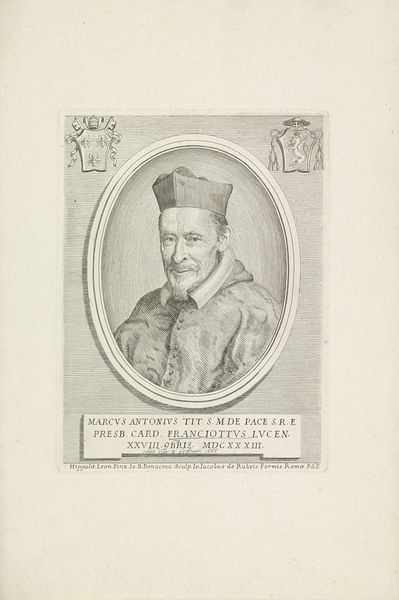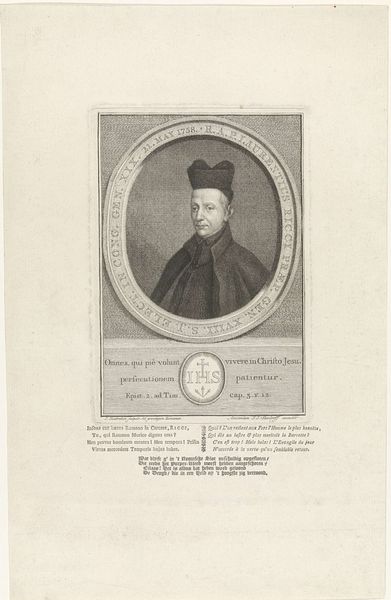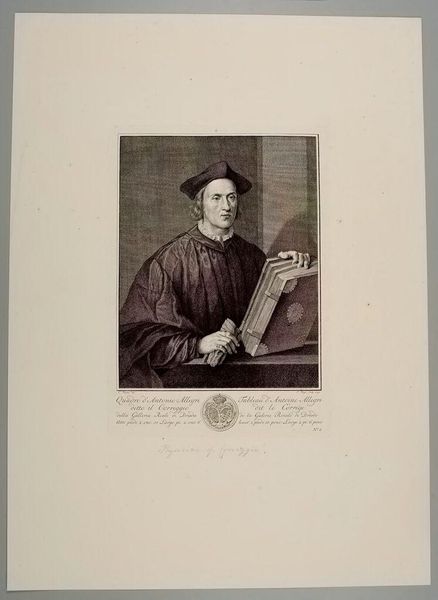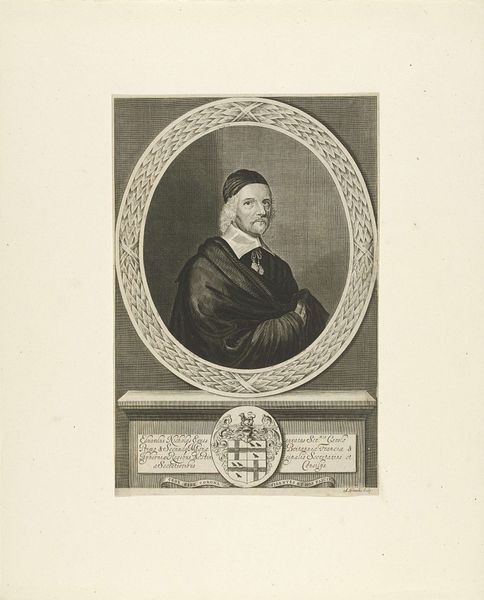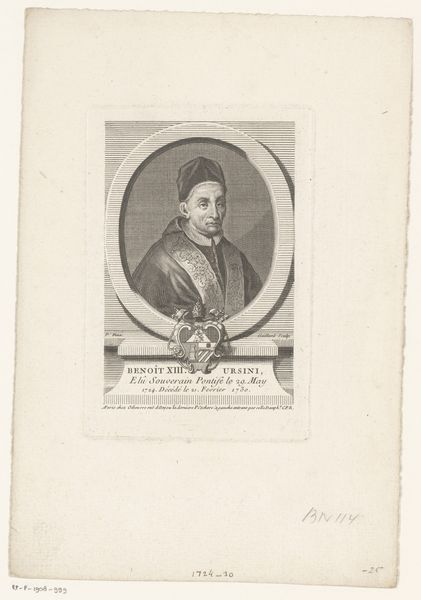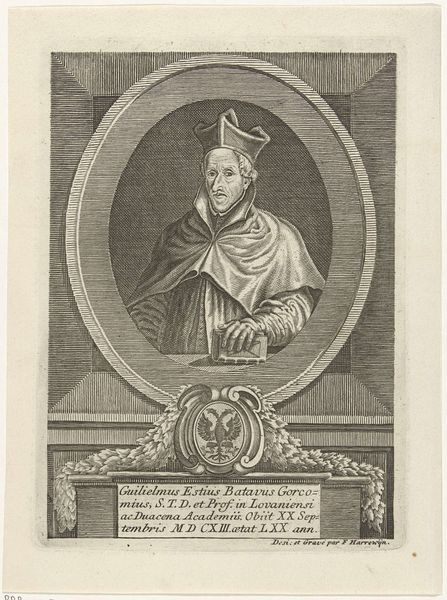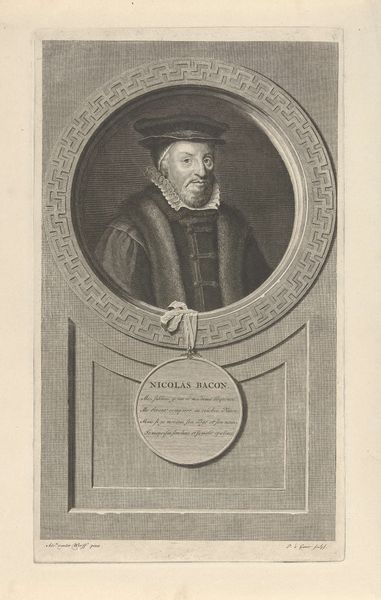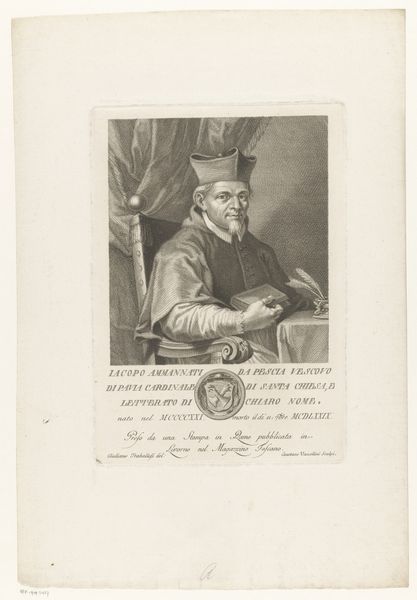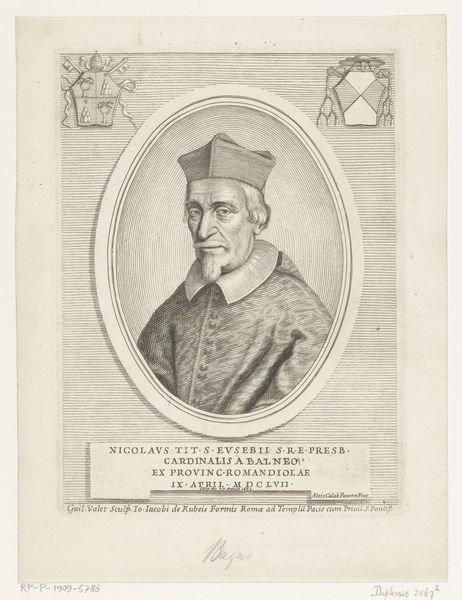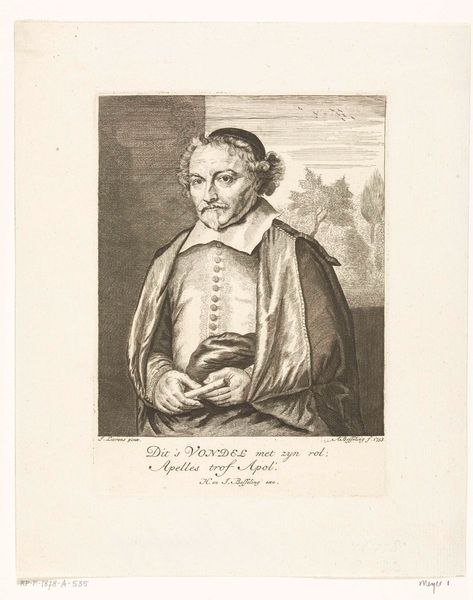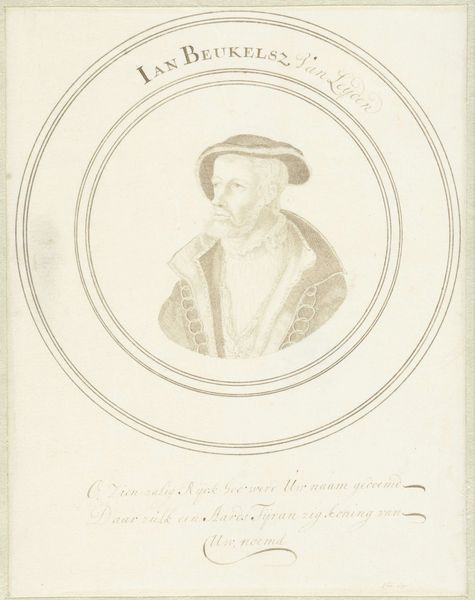
Dimensions: height 300 mm, width 200 mm
Copyright: Rijks Museum: Open Domain
Curator: This engraving, dating from 1739 to 1784, presents us with a "Portret van Jacopo Gherardi." It’s the work of Carlo Faucci. Tell me, what are your initial thoughts? Editor: Intensely serious. Somber, almost. There’s a formality that’s kind of intimidating, a stillness captured in the line work, like a photograph but far more...austere. Curator: Indeed. Notice how Faucci employs the meticulous detail characteristic of Baroque portraiture, achieving verisimilitude in texture and form. The hatching and cross-hatching define volume, constructing a three-dimensional presence from a two-dimensional plane. Semiotically, consider the book he holds; what does it communicate about his identity? Editor: Oh, absolutely – the book is key. Instantly tells us he’s learned, educated... pious even? And look at the severity of the lines etched into his face – they tell a story, not just of age, but maybe of responsibility, or perhaps burdens carried. There’s a sense of weight here, you know? But that’s contrasted by the rather ornate detail in the inscription below. Curator: Precisely! It offers narrative context to his position. The heraldic crest grounds him within a specific socio-historical milieu. These visual cues create a symbolic framework that situates Jacopo Gherardi within the history of papal power. Editor: Right, right… It’s interesting how the style lends such gravity. I wonder what Jacopo Gherardi would make of it. Would he feel seen, or... ossified? Like he's been turned into a symbol instead of just being himself? Curator: That invites a crucial reflection: Does artistic representation authentically capture its subject or reframe it through the artist's subjective vision? Editor: And a loaded question indeed, given the Baroque impulse toward spectacle! All the elements here—the texture, the detail, the implied narrative—speak volumes, if you will, both literally and figuratively. Well, the engraving does offer a poignant reminder of history, but also of the choices artists make in shaping it.
Comments
No comments
Be the first to comment and join the conversation on the ultimate creative platform.
